
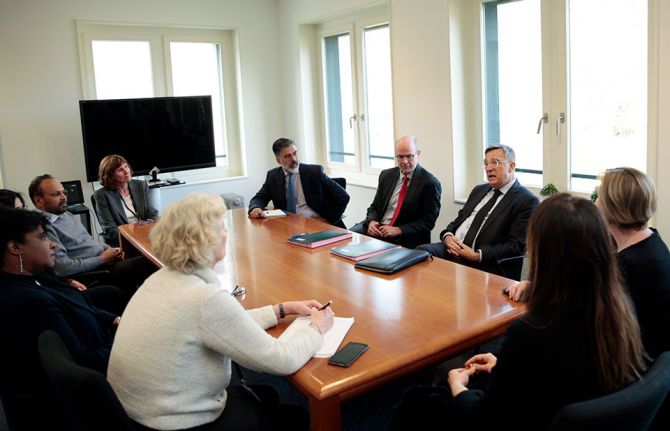
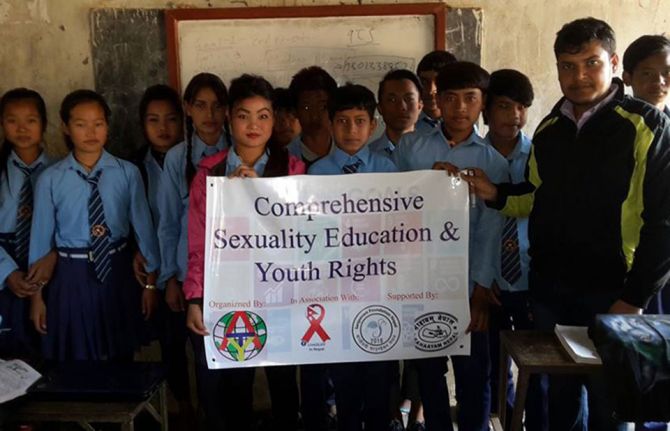

Press Release
UNAIDS and United Nations Volunteers further joint collaboration
09 March 2020 09 March 2020GENEVA, 9 March 2020—UNAIDS and the United Nations Volunteers Programme (UNV) have signed a memorandum of understanding to foster closer collaboration between the two organizations. Under the new memorandum of understanding, UNAIDS and UNV will work together to promote volunteering and engage United Nations Volunteers who are committed to supporting people living with and affected by HIV.
“Volunteers have played a critical role in the response to HIV since the earliest days of the epidemic,” said Tim Martineau, UNAIDS Deputy Executive Director, Management and Governance, a.i. “UNAIDS recognizes their importance, values their engagement and will continue to support their contribution in joining global efforts to end AIDS.”
Over the past 10 years, 97 United Nations Volunteers have served with UNAIDS across 36 countries, working to stop new HIV infections, ensure that everyone living with HIV has access to treatment, protect and promote human rights and produce data for decision-making.
“HIV is much more than a health issue. It is an issue of development and social justice, which cuts across so many of the Sustainable Development Goals,” said Olivier Adam, Executive Coordinator of UNV. “This is where UNV comes in—our volunteers are uniquely placed to engage people and deliver on the 2030 Agenda through global, regional, national and community-level implementation.”
International UN Volunteer Tobias Volz joined the UNAIDS Country Office for Nepal, Bhutan and Bangladesh in 2018, where he helped to develop and implement Live2Luv, a youth-led social media initiative that gives young people in Nepal a platform to voice their concerns, ask questions and challenge taboos about sexual and reproductive health.
“Live2Luv in Nepal strives to achieve an environment where Nepali youth can openly ask questions about sex, sexuality and contraception and get the right answers,” said Mr Volz. “Because adolescents need access to age-appropriate comprehensive sexuality education, in this youth-led movement young teachers will educate and inspire others.”
UN Volunteer Tian Liang recently served as a Communications Officer in UNAIDS’ China office, “UNV gave me an excellent opportunity to use my professional skills to create awareness among the public on the AIDS response and eliminate public bias and misunderstanding of AIDS,” said Mr Liang.
United Nations Volunteers
The United Nations Volunteers (UNV) programme contributes to peace and development through volunteerism worldwide. We work with partners to integrate qualified, highly motivated and well supported UN Volunteers into development programming and promote the value and global recognition of volunteerism. www.unv.org
UNAIDS
The Joint United Nations Programme on HIV/AIDS (UNAIDS) leads and inspires the world to achieve its shared vision of zero new HIV infections, zero discrimination and zero AIDS-related deaths. UNAIDS unites the efforts of 11 UN organizations—UNHCR, UNICEF, WFP, UNDP, UNFPA, UNODC, UN Women, ILO, UNESCO, WHO and the World Bank—and works closely with global and national partners towards ending the AIDS epidemic by 2030 as part of the Sustainable Development Goals. Learn more at unaids.org and connect with us on Facebook, Twitter, Instagram and YouTube.


Press Release
Forty years into the HIV epidemic, AIDS remains the leading cause of death of women of reproductive age—UNAIDS calls for bold action
05 March 2020 05 March 2020Gender discrimination and violence, gaps in education and lack of economic empowerment and protection of sexual and reproductive health and rights are blocking progress
GENEVA/JOHANNESBURG, 5 March 2020—Ahead of International Women’s Day, UNAIDS has launched a new report showing that the stark inequalities and inequities between men and women are continuing to make women and girls more vulnerable to HIV. We’ve got the power urges governments to do more to empower women and girls and fulfil their human rights.
“The HIV epidemic holds a mirror up to the inequalities and injustices faced by women and girls and how the gaps in rights and services are exacerbating the epidemic,” said Winnie Byanyima, Executive Director of UNAIDS. “This is unacceptable, it is avoidable and it must end.”
Twenty-five years ago, governments took the historic step of adopting the Beijing Declaration and the Platform for Action, the most comprehensive and progressive global policy road map for fulfilling the human rights of women and girls and achieving gender equality.
Progress has been made in key areas. More girls are in school and gender gaps in primary schooling are closing globally, in some countries there are more women involved in political leadership and other countries have worked to protect women’s rights in legislation. HIV treatment has also been scaled up, so that by mid-2019 there were more than 24 million people living with HIV on treatment, including more than 13 million women aged 15 years and over.
The report shows, however, that many of the promises made to improve the lives of women and girls around the world have not been kept. Almost 40 years into the response, AIDS is still the leading cause of death for women aged between 15 and 49 years and around 6000 young women aged between 15 and 24 years acquire HIV every week.
We’ve got the power outlines some critical areas to address, including eliminating violence against women. In areas with a high HIV prevalence, intimate partner violence has been found to increase the risk of women acquiring HIV by 50%. Being HIV-positive can also be a trigger for violence, with women living with HIV frequently reporting violence from intimate partners, family and community members and in health services.
The report highlights that outside of sub-Saharan Africa, most women at risk of HIV belong to marginalized communities, such as sex workers, women who inject drugs, transgender women and women in prison. However, gender inequality, stigma and discrimination, criminalization, violence and other human rights violations continue to prevent them from accessing the services they need. Laws and policies need to be reformed in order to end harmful criminalization and coercive practices based on people’s sexuality, sexual activity, HIV status and gender.
For the AIDS response to be fully effective, policies and services must answer to what woman and girls want and need. This includes ensuring adolescent-focused approaches and peer support systems and that rights, gender and non-violence components are integrated into comprehensive sexuality education. Data show that in 2019 adolescents younger than 18 years needed parental or guardian consent in 105 of 142 countries in order to take an HIV test and in 86 of 138 countries they needed consent to access HIV treatment and care.
Surveys from 2013 to 2018 also show that knowledge of HIV prevention remains worryingly low, particularly among women and girls. In sub-Saharan Africa, the region most affected by HIV, seven out of 10 young women did not have comprehensive knowledge about HIV. In contrast, countries that do invest in scaling up effective HIV prevention programmes show impressive results. When Lesotho provided a comprehensive package of HIV prevention programmes it saw new HIV infections among women and girls fall by 41% between 2010 and 2018.
There are huge gaps in education more generally. Studies show that keeping girls in school can have a protective effect against HIV. When Botswana extended mandatory secondary education, it found that each additional year of schooling after year 9 was associated with a 12% reduction in girls’ risk of acquiring HIV. However, nearly one in three adolescent girls from the poorest households around the world has never been to school.
The economic autonomy of women is crucial in its own right and an important component of the AIDS response, yet women still have far fewer economic opportunities than men and shoulder most unpaid care and domestic work. Only 88 countries of 190 had laws mandating equal pay for equal work. Ensuring legal protections to end gender discrimination and guaranteeing women equality before the law are critical to advancing the response to HIV.
“Women and adolescent girls are demanding their rights,” said Ms Byanyima. “Governments must act on those demands by providing resources and services to protect their rights and properly respond to their needs and perspectives.”
The report highlights a number of ways forward. These include investing in HIV policies and programmes proven to foster gender equality, investing in education, including comprehensive sexuality education and the economic empowerment of women and girls, reforming laws that uphold the equal rights of all women and girls, including measures to end stigma and discrimination, violence and criminalization directed at women and girls, holistic care and dignified treatment, the meaningful participation of women in all decision-making relating to HIV programming and supporting the leadership and engagement of women and young people in decision-making at all levels of the AIDS response.
UNAIDS
The Joint United Nations Programme on HIV/AIDS (UNAIDS) leads and inspires the world to achieve its shared vision of zero new HIV infections, zero discrimination and zero AIDS-related deaths. UNAIDS unites the efforts of 11 UN organizations—UNHCR, UNICEF, WFP, UNDP, UNFPA, UNODC, UN Women, ILO, UNESCO, WHO and the World Bank—and works closely with global and national partners towards ending the AIDS epidemic by 2030 as part of the Sustainable Development Goals. Learn more at unaids.org and connect with us on Facebook, Twitter, Instagram and YouTube.
Contact
UNAIDS GenevaSophie Barton-Knott
tel. +41 79 514 6896
bartonknotts@unaids.org
UNAIDS Media
tel. +41 22 791 4237
communications@unaids.org
Press centre
Download the printable version (PDF)

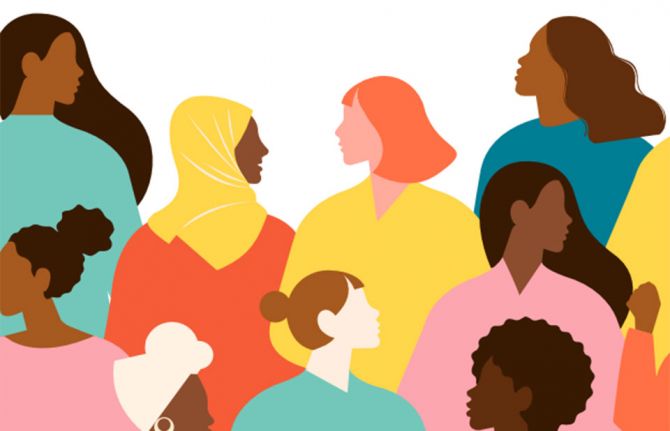
Press Release
UNAIDS calls for zero discrimination against women and girls
01 March 2020 01 March 2020GENEVA, 1 March 2020—On Zero Discrimination Day, which is commemorated every year on 1 March, UNAIDS is calling for an end to discrimination against women and girls and for equal rights, opportunities and treatment.
Despite progress in some areas, in 2020 coercive practices, discriminatory legislation and gender-based violence are just some of the human rights violations that are continuing to have a disproportionate impact on the lives of women and girls around the world. UNAIDS is highlighting areas where change is urgently needed: equal participation in political life; human rights and laws that empower; economic justice—equal pay for equal work; ending gender-based violence; provide health care without stigma or barriers; equal and free access to primary and secondary education; and climate justice.
“Feminism, human rights and zero discrimination are values shared across the world,” said Winnie Byanyima, Executive Director of UNAIDS. “They express our humanity, our recognition that we share a vision for a better future, and they are central to ending AIDS.”
Globally, at least one in three women and girls have experienced violence in their lives, with adolescent girls experiencing higher rates of intimate partner violence than adult women overall. This figure hides deep disparities, with more than 50% of women in some countries reporting violence just in the past 12 months.
Although some countries have made progress towards greater gender equality, discrimination against women and girls still exists everywhere. We know that without equal opportunities early on, without access to education, inequality will persist. Yet, nearly one in three adolescent girls aged between 10 and 19 years from the poorest households globally has never been to school.
Inequalities, discrimination and violence continue to be enabled within the very structures of society. In many countries, laws that discriminate against women and girls remain in force—in areas of work, property, criminal law and sexual and reproductive health and rights, among others.
More than 80 countries criminalize some aspect of sex work, and women are disproportionately affected by laws that criminalize drug use. Meanwhile, laws that uphold women’s basic rights and protect them against harm and unequal treatment are far from the norm. For example, only 88 out of 190 countries have laws regarding equal pay for work of equal value for men and women. Intersecting with other forms of discrimination, on income, race, ethnicity, disability, sexual orientation and gender identity, these rights violations disproportionately harm women and girls.
Numerous government commitments to end violence and discrimination against women and girls have been made over the years, yet hundreds of millions of women and girls continue to be subjected to discrimination, abuse and violence, at huge cost to themselves and to their families, communities, societies and economic development.
“We need to transform our societies so that no one is second class,” said Ms Byanyima. “We must end gender-based violence, inequality and insecurity, and ensure that women and girls have equal access to education, health, public life and employment.”
For this transformation, we need women in roles of leadership, at the community level as well as nationally, regionally and globally. Representation of women’s interests is central to changing structural inequalities. Yet, in 2019, less than a quarter of parliamentarians were women.
Compounding these inequalities are the burdens of unpaid care and domestic work, unequal property and inheritance rights and limited financial autonomy. It is estimated that women carry out three quarters of care work in the household—work that is still not given recognition for its importance in society and the economy and remains unpaid.
Ensuring that women’s rights are protected, ending discrimination against women and girls and removing discriminatory laws will be central to achieving the Sustainable Development Goals and ensuing equity and equality for all.
UNAIDS
The Joint United Nations Programme on HIV/AIDS (UNAIDS) leads and inspires the world to achieve its shared vision of zero new HIV infections, zero discrimination and zero AIDS-related deaths. UNAIDS unites the efforts of 11 UN organizations—UNHCR, UNICEF, WFP, UNDP, UNFPA, UNODC, UN Women, ILO, UNESCO, WHO and the World Bank—and works closely with global and national partners towards ending the AIDS epidemic by 2030 as part of the Sustainable Development Goals. Learn more at unaids.org and connect with us on Facebook, Twitter, Instagram and YouTube.
Contact
UNAIDS GenevaSophie Barton-Knott
tel. +41 22 791 1697
bartonknotts@unaids.org
UNAIDS Media
tel. +41 22 791 4237
communications@unaids.org

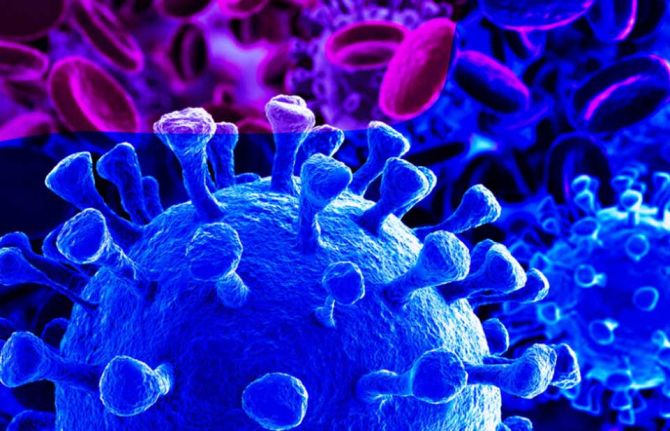
Press Release
UNAIDS and China working together during the COVID-19 outbreak to ensure that people living with HIV continue to get treatment
19 February 2020 19 February 2020GENEVA, 19 February 2020—A survey of people living with HIV has found that the current coronavirus disease outbreak, known as COVID-19, is having a major impact on the lives of people living with HIV in the country.
In the survey, nearly a third (32.6%) of people living with HIV reported that, because of the lockdowns and restrictions on movement in some places in China, they were at risk of running out of their HIV treatment in the coming days—of these, almost half (48.6%) said they didn’t know where to collect their next antiretroviral therapy refill from. However, a close partnership between the government and community partners is determined to ensure that access to life-saving HIV treatment is not interrupted as the country fights to get COVID-19 under control.
The Chinese National Center for AIDS/STD Control and Prevention has directed local authorities to ensure that non-resident people living with HIV can collect their medication wherever they are and has published and disseminated lists of antiretroviral therapy clinics. The UNAIDS China Country Office is working with the BaiHuaLin alliance of people living with HIV and other community partners to urgently reach those people living with HIV who are at risk of running out of their medicines in the next 10–14 days and will offer support as necessary. UNAIDS will also be donating personal protective equipment to civil society organizations serving people living with HIV, hospitals and others to help improve the quality of care for people in health facilities and to prevent coinfection of people living with HIV with COVID-19.
“People living with HIV must continue to get the HIV medicines they need to keep them alive,” said Winnie Byanyima, UNAIDS Executive Director. “I applaud the efforts of the Chinese National Center for AIDS/STD Control and Prevention to support people living with HIV affected by the lockdowns to get their medicines—we must ensure that everyone who needs HIV treatment gets it, no matter where they are.”
The COVID-19 outbreak in China has resulted in an unprecedented response, resulting in hospitals and health-care workers being overwhelmed as they look after COVID-19 patients. Lockdowns in cities have resulted in people living with HIV who had travelled away from their hometowns not being able to get back to where they live and access HIV services, including treatment, from their usual health-care providers.
While the vast majority of the respondents (82%) said that they had the information they need to assess personal risk and take preventive measures against COVID-19, almost 90% said that they wanted more information on specific protective measures for people living with HIV. Similar to the general population, many of the respondents (more than 60%) said that they didn’t have enough personal and household protective equipment, such as face masks, soap or disinfectant, medical alcohol or gloves. Nearly a third reported being anxious and needing psychosocial support during the COVID-19 outbreak.
“We need to know how many people living with HIV are contracting COVID-19, whether people living with HIV are at greater risk of contracting COVID-19 and, if they contract it, whether they are in greater danger from it—at this stage of the COVID-19 outbreak there are so many unknowns. We must fill in the gaps in our knowledge, and fill those gaps in rapidly,” added Ms Byanyima.
The survey was devised and launched jointly by UNAIDS and the BaiHuaLin alliance of people living with HIV, with the support of the Chinese National Center for AIDS/STD Control and Prevention. UNAIDS mobilized community support for the survey and promoted the survey online in order to maximize the responses to it—more than 1000 people living with HIV replied. Responses were collected from 5 to 10 February 2020. A follow-up in-depth survey is to be carried out in partnership with the School of Medicine at Zhongshan University, which will go beyond community needs and will look at health systems issues that have a direct impact on HIV services.
UNAIDS
The Joint United Nations Programme on HIV/AIDS (UNAIDS) leads and inspires the world to achieve its shared vision of zero new HIV infections, zero discrimination and zero AIDS-related deaths. UNAIDS unites the efforts of 11 UN organizations—UNHCR, UNICEF, WFP, UNDP, UNFPA, UNODC, UN Women, ILO, UNESCO, WHO and the World Bank—and works closely with global and national partners towards ending the AIDS epidemic by 2030 as part of the Sustainable Development Goals. Learn more at unaids.org and connect with us on Facebook, Twitter, Instagram and YouTube.

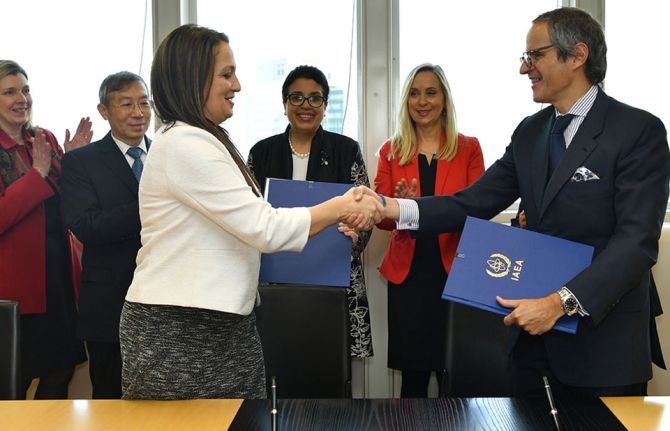
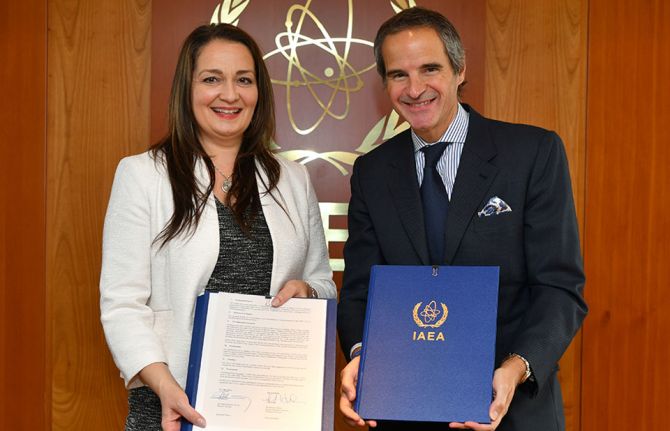

Press Release
UNAIDS and IAEA forge a powerful partnership against the interlinked diseases of cervical cancer and HIV
07 February 2020 07 February 2020GENEVA, 7 February 2020—UNAIDS and the International Atomic Energy Agency (IAEA) have joined forces to increase action against cervical cancer and HIV. In a memorandum of understanding signed following an event to mark World Cancer Day at the headquarters of IAEA in Vienna, Austria, the two organizations pledged to scale up and expand services for adolescent girls and women affected by the two diseases.
Cervical cancer and HIV are inextricably linked. Cervical cancer is the most common cancer among women living with HIV, who are up to five times more likely to develop the disease, and women infected with certain types of the human papillomavirus also face a double risk of acquiring HIV.
"How is it fair that 90% of girls in high-income countries have access to the human papillomavirus vaccine, yet in low- and middle-income countries just 10% have access?" said Winnie Byanyima, Executive Director of UNAIDS. "Like HIV, cervical cancer is a disease of health, gender and socioeconomic inequalities for women and girls all over the world. Services must be expanded and integrated as an investment in the lives of women and girls and to uphold their right to health.”
In 2018, around 311 000 women died of cervical cancer, 85% of whom were in low- and middle-income countries, where vaccination, screening and treatment programmes are limited. The high mortality rate from cervical cancer globally could be greatly reduced by stepping up action in those countries.
Around 70% of women who develop cervical cancer require radiotherapy to effectively treat the disease; however, IAEA estimates that one third of low- and middle-income countries do not offer adequate radiation medicine services to meet patient needs. In Africa, 28 countries do not have a single radiotherapy unit. Part of IAEA’s work is to help countries in the use of nuclear and radiation medicine to treat cervical and other types of cancer.
“Cervical cancer is one of those cancers that are perfectly treatable and curable if you live in Vienna, Buenos Aires, Rome or Paris,” said IAEA Director General Rafael Mariano Grossi. “If you happen to live in a country with limited access to radiotherapy that is something that can kill you.” He added that the partnership with UNAIDS was very important to maximize efforts in the important mission to help countries tackle cancer.
As part of the new agreement, UNAIDS and IAEA will work together to support national strategies and programmes to develop integrated workplans for HIV and cervical cancer. In addition, they will mobilize resources to expand prevention, diagnosis and treatment services, train health professionals and raise awareness around the links between HIV and cervical cancer.
UNAIDS
The Joint United Nations Programme on HIV/AIDS (UNAIDS) leads and inspires the world to achieve its shared vision of zero new HIV infections, zero discrimination and zero AIDS-related deaths. UNAIDS unites the efforts of 11 UN organizations—UNHCR, UNICEF, WFP, UNDP, UNFPA, UNODC, UN Women, ILO, UNESCO, WHO and the World Bank—and works closely with global and national partners towards ending the AIDS epidemic by 2030 as part of the Sustainable Development Goals. Learn more at unaids.org and connect with us on Facebook, Twitter, Instagram and YouTube.
Press centre
Download the printable version (PDF)

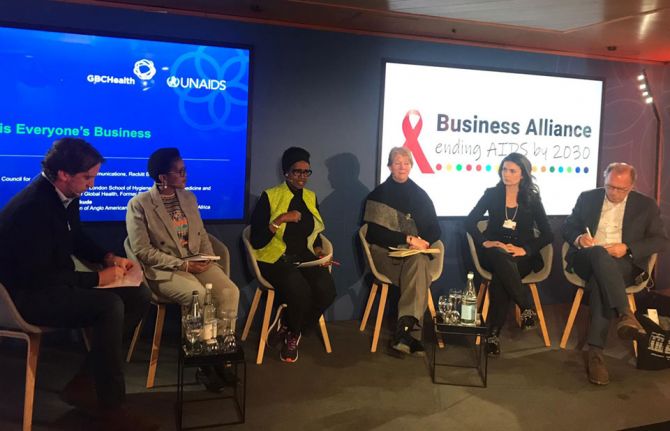
Press Release
The Business Alliance to End AIDS by 2030 is announced at the World Economic Forum
23 January 2020 23 January 2020DAVOS/GENEVA, 23 January 2020—The Business Alliance to End AIDS by 2030, a public–private coalition co-hosted by UNAIDS and GBCHealth, was announced today in Davos, Switzerland, on the margins of the World Economic Forum Annual Meeting.
The Business Alliance to End AIDS brings together forward-looking companies to strengthen cross-sector collaboration, build on common values and create spaces for effective collaboration. It aims to provide businesses with the necessary tools and support needed from public sector partners to help realize the goal of ending AIDS by 2030.
Business has been and continues to be essential to the AIDS response, from challenging the stigma surrounding HIV, building innovative partnerships among companies across industries and implementing diagnosis, treatment and prevention programmes within workplaces and surrounding communities. However, these models need to operate to scale to meet the gaps in investment and implementation needed to meet the target of ending AIDS by 2030.
“Today, every single company must make a positive contribution to the societies they serve—this is not an option, this is an imperative. Beyond reaching their economic objectives, companies must deliver social and environmental impact. The private sector has a key role to play in the multisectoral response to HIV. Businesses must ensure that their employees, their suppliers and communities receive life-saving HIV treatment, prevention and care programmes. Together, we can end AIDS by 2030,” said Winnie Byanyima, Executive Director of UNAIDS.
“Realizing a world free of AIDS is beyond the reach of one company. Business as usual will not achieve the Sustainable Development Goals, nor will innovation by a few pioneers. This agenda will require collaboration across sectors, supply chains and economic systems, as well as innovative partnerships with governments and civil society. We at Anglo American are committed to be part of the Business Alliance to End AIDS by 2030 and urge other businesses to join our collective efforts,” said Nolitha Fakude, Chairperson of Anglo American’s Management Board in South Africa.
“Responding to HIV matters to business, and businesses have been leaders in the global AIDS response for over two decades. Business innovations in products and services, relationships with employees, consumers and policymakers, core capabilities and logistics, data analytics, marketing and financial resources can all help to fill the gaps in publicly funded HIV testing, prevention and treatment programmes. Forward-thinking businesses are needed to help develop holistic solutions and manage risk. We are at a crossroads. The future will be determined by what we do today,” said Nancy Wildfeir-Field, President of GBCHealth.
The Business Alliance to End AIDS by 2030 will act as a vehicle and a collective voice to disseminate best practices through public platforms, their companies and their respective supply chains. In addition, it will serve as a collective body to help shape regulations and policies that support HIV prevention and treatment programmes and end HIV-related stigma and discrimination.
For further information on the Business Alliance to End AIDS by 2030 and how you can join, please contact Frauke Joosten at joostenvegliof@unaids.org.
UNAIDS
The Joint United Nations Programme on HIV/AIDS (UNAIDS) leads and inspires the world to achieve its shared vision of zero new HIV infections, zero discrimination and zero AIDS-related deaths. UNAIDS unites the efforts of 11 UN organizations—UNHCR, UNICEF, WFP, UNDP, UNFPA, UNODC, UN Women, ILO, UNESCO, WHO and the World Bank—and works closely with global and national partners towards ending the AIDS epidemic by 2030 as part of the Sustainable Development Goals. Learn more at unaids.org and connect with us on Facebook, Twitter, Instagram and YouTube.
Press centre
Download the printable version (PDF)

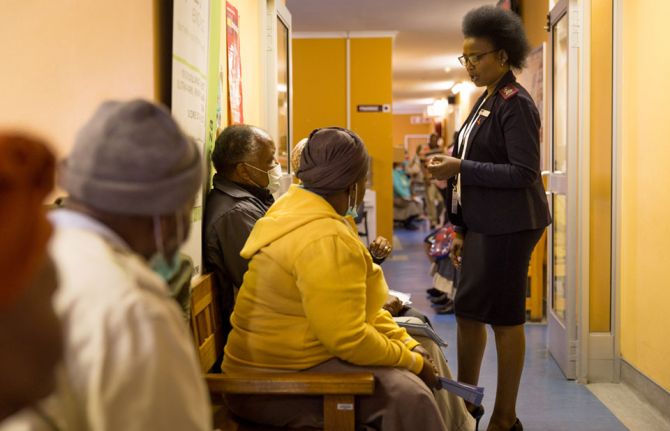
Press Release
Health should not be a privilege for the rich—the right to health belongs to everyone
20 January 2020 20 January 2020Gaps in public financing for health can be met by eliminating tax dodging and implementing progressive taxation; health and development must be protected from the growing impact of debt
DAVOS/GENEVA, 21 January 2020—UNAIDS is calling on governments to ensure that the right to health is realized by all by prioritizing public investments in health. At least half of the world’s population cannot access essential health services. Every two minutes a woman dies while giving birth. Among the people being left behind are women, adolescents, people living with HIV, gay men and other men who have sex with men, sex workers, people who inject drugs, transgender people, migrants, refugees and poor people.
“The right to health is eluding the poor and people trying to lift themselves out of poverty are being crushed by the unacceptably high costs of health care. The richest 1% benefit from cutting-edge science while the poor struggle to get even basic health care,” said Winnie Byanyima, Executive Director of UNAIDS.
Nearly 100 million people are pushed into extreme poverty (defined as living on US$ 1.90 or less a day) because they have to pay for health care, and more than 930 million people (around 12% of the world’s population) spend at least 10% of their household budgets on health care. In many countries, people are denied health care or receive poor quality health care because of unaffordable user fees. Stigma and discrimination denies poor and vulnerable people, especially women, their right to health.
Every week, 6000 young women around the world become infected with HIV. In sub-Saharan Africa, four out of five new HIV infections among adolescents are among adolescent girls and AIDS-related illnesses are the biggest killer of women of reproductive age in the region. Despite significant progress in reducing AIDS-related deaths and new HIV infections, there were 1.7 million new HIV infections in 2018 and nearly 15 million people are still waiting to receive HIV treatment.
“Publicly financed health care is the greatest equalizer in society,” said Ms Byanyima. “When health spending is cut or inadequate, it is poor people and people on the margins of society, especially women and girls, who lose their right to health first, and they have to bear the burden of caring for their families.”
Delivering health care for all is a political choice that too many governments are not making. Thailand has reduced mortality rates for children under the age of five years to 9.1 per 1000 live births, while in the United States of America the rate is 6.3 per 1000 live births, even though Thailand’s gross domestic product per capita is about one tenth of that of the United States. Thailand’s progress has been achieved through a publicly financed health-care system that entitles every Thai citizen essential health services at all life stages and leaves no one behind.
South Africa had just 90 people on antiretroviral therapy in 2000, but in 2019 had more than 5 million on HIV treatment. South Africa now has the largest HIV treatment programme in the world. Countries such as Canada, France, Kazakhstan and Portugal have strong publicly financed health systems, yet some other richer countries do not.
Health investments in many countries remain very low compared to their gross domestic product. The United Nations Conference on Trade and Development estimates that developing countries lose between US$ 150 billion and US$ 500 billion every year owing to corporate tax avoidance and profit shifting by big companies. If this lost money were invested in health, health expenditure could triple in low-income countries and could double in lower-middle-income countries. The race to the bottom on corporate tax cheats denies developing countries of much needed revenue and robs ordinary people of vital health services. The countries of the Economic Community of West African States lose an estimated US$ 9.6 billion each year to numerous tax incentives.
“It is unacceptable that rich people and big companies are avoiding taxes and ordinary people are paying through their ill health,” said Ms Byanyima. “Big companies must pay their fair share of taxes, protect employee rights, provide equal pay for equal work and provide safe working conditions for all, especially women.”
Debt is posing a serious threat to Africa’s economy, health and development, resulting in big cuts in social spending to ensure debt repayment. According to the International Monetary Fund, as of April 2019 half of low-income countries in Africa were either in debt distress or at a high risk of being so. Beyond low-income countries, in Zambia there was a 27% drop in health-care investments and an increase of debt servicing by 790% between 2015 and 2018. Similar trends were seen in Kenya, where debt servicing increased by 176% and health investments declined by 9% between 2015 and 2018. “There is an urgent need to manage debt in ways that protects people’s health. That means ensuring new financing focuses on social investments, debt repayments being halted for a period if needed to allow economic recovery and debt restructuring under a coordinated mechanism to protect spending on HIV, health and development,” said Ms Byanyima.
A major factor of ill health is the denial of human rights. According to the World Bank, more than one billion women lack legal protection against domestic violence and close to 1.4 billion women lack legal protection against domestic economic violence. In at least 65 countries, a same-sex sexual relationship is a crime. In recent years in some countries, crackdowns and restrictions on lesbian, gay, bisexual, transgender and intersex people have increased. Sex work is a criminal offence in 98 countries. Forty-eight countries and territories still maintain some form of HIV-related restrictions on entry, stay and residence. A recent study of sex work policies in 27 countries concluded that those that decriminalized some aspects of sex work have significantly lower HIV prevalence among sex workers.
In 91 countries, adolescents require the consent of their parents to take an HIV test and in 77 countries they require the consent of their parents to access sexual and reproductive health services, creating barriers to protect young people from HIV infection. One of the consequences of this is that the HIV incidence rate among young women and girls in eastern and southern Africa is twice that of their male peers.
“In the next decade, we can end AIDS as a public health threat and achieve universal health coverage. Governments must tax fairly, provide publicly funded quality health care, guarantee human rights and achieve gender equality for all—it is possible,” said Ms Byanyima.
UNAIDS is participating in several events at the 2020 World Economic Forum Annual Meeting in Davos, Switzerland, to highlight the need for governments to fulfil their commitments to realize universal health coverage and ensure that no one is left behind.
UNAIDS
The Joint United Nations Programme on HIV/AIDS (UNAIDS) leads and inspires the world to achieve its shared vision of zero new HIV infections, zero discrimination and zero AIDS-related deaths. UNAIDS unites the efforts of 11 UN organizations—UNHCR, UNICEF, WFP, UNDP, UNFPA, UNODC, UN Women, ILO, UNESCO, WHO and the World Bank—and works closely with global and national partners towards ending the AIDS epidemic by 2030 as part of the Sustainable Development Goals. Learn more at unaids.org and connect with us on Facebook, Twitter, Instagram and YouTube.
Press centre
Download the printable version (PDF)

Press Release
UNAIDS Executive Director outlines her vision to the UNAIDS Board
13 December 2019 13 December 2019GENEVA, 13 December 2019—Winnie Byanyima, speaking at the first meeting of the UNAIDS Programme Coordinating Board (PCB) since her appointment as the UNAIDS Executive Director, has outlined her priorities for 2020. Noting that, “The global response to HIV and the Joint Programme provide one of the strongest examples of the value of multilateralism and global solidarity,” she added that, “The year 2020 provides us with an opportunity to reflect upon how the Joint Programme can work even better.”
The Executive Director of UNAIDS said that UNAIDS would step up its work in four areas: women and girls in Africa; defending the human rights of everyone; putting science, innovation and technology in the hands of people; and financing the global AIDS response.
Ms Byanyima noted the enormous progress that has been made in the AIDS response, but told the meeting that, despite major progress by some countries and some regions, the world will overall not reach the target of a 75% reduction in new HIV infections by the end of 2020. The 45th meeting of the PCB, which concluded yesterday, underlined the importance of countries increasing investment in HIV prevention, with no less than one quarter of HIV spending to be invested in prevention programmes.
During the meeting, the PCB also requested a review of the UNAIDS 2016–2021 Strategy, its implementation and the results obtained. The results of the review will be considered in a wide-ranging consultation and will be presented at the next meeting of the PCB, in June 2020, as part of the development of the next UNAIDS strategy.
“The process for the development of the next strategy will be deeply data-driven and consultative, involving UNAIDS staff, our Cosponsors, civil society, people living with and affected by HIV, young people, faith institutions, ministers of health, finance and gender and parliamentarians, scientists, donors and the private sector,” said Ms Byanyima.
In her opening address to the PCB, Ms Byanyima spoke about the challenges and opportunities that lie ahead in the less than 13 months until the end of 2020―when a set of HIV prevention, treatment and other targets should be reached―and the less than 11 years until 2030, the date by which the world has committed to end AIDS.
Ms Byanyima said that her priority would be UNAIDS’ greatest asset―its staff. “Much has been done, but there is still a long way to go. Work must continue to restore trust among staff and with external partners, and to change the culture so that UNAIDS never tolerates any kind of abuse of power, such as harassment, sexual misconduct or bullying, and UNAIDS encourages staff to feel safe and to speak up.”
The PCB, noting the recent Joint Inspection Unit review of the management and administration of UNAIDS, welcomed Ms Byanyima’s commitment to establish an annual PCB agenda item to cover internal and external audits, ethics and other topics on accountability.
In paying tribute to Gunilla Carlsson, the UNAIDS Deputy Executive Director, Management and Governance, who will be leaving UNAIDS in early 2020, Ms Byanyima thanked her for guiding UNAIDS through the recent reputational crisis and facilitating the leadership transition. Wishing Ms Carlsson well in her future endeavours, she praised Ms Carlsson for driving forward critical reforms in management and governance, ensuring protection and support for staff members who have suffered from harassment and abuse of authority and leading the implementation of the UNAIDS Gender Action Plan and the Management Action Plan.
The PCB’s nongovernmental organization delegation put forward a report on universal health coverage, highlighting the role of communities as critical partners and stakeholders in the design and implementation of universal health coverage, and a request was made by the PCB for UNAIDS to continue to support countries to ensure that comprehensive HIV services remain or become available and accessible under a universal health coverage programme.
The last day of the meeting was a full-day thematic session on reducing the impact of AIDS on children and youth, which raised alarm that progress in eliminating new HIV infections among infants and getting children from 0–14 years old living with HIV on effective HIV treatment and thriving has slowed worryingly. The PCB engaged with panels on the importance of youth leadership in shaping the HIV response towards holistic approaches.
Representatives of United Nations Member States, international organizations, civil society and nongovernmental organizations attended the three-day meeting, which was chaired by China, with the United States of America serving as Vice-Chair and Belarus as Rapporteur.
The PCB’s decisions can be found at https://www.unaids.org/en/whoweare/pcb/45.
UNAIDS
The Joint United Nations Programme on HIV/AIDS (UNAIDS) leads and inspires the world to achieve its shared vision of zero new HIV infections, zero discrimination and zero AIDS-related deaths. UNAIDS unites the efforts of 11 UN organizations—UNHCR, UNICEF, WFP, UNDP, UNFPA, UNODC, UN Women, ILO, UNESCO, WHO and the World Bank—and works closely with global and national partners towards ending the AIDS epidemic by 2030 as part of the Sustainable Development Goals. Learn more at unaids.org and connect with us on Facebook, Twitter, Instagram and YouTube.


Press Release
Sri Lanka eliminates vertical transmission of HIV and syphilis
13 December 2019 13 December 2019GENEVA/BANGKOK, 13 December 2019—UNAIDS congratulates Sri Lanka for achieving the elimination of vertical transmission of HIV and congenital syphilis. “Sri Lanka’s remarkable achievement gives me hope and shows that change is possible. It is clear that when a country ensures that services are accessible and stigma-free for women, including for women living with or affected by HIV, results follow that benefit women’s health, their children’s health and society as a whole,” said Winnie Byanyima, UNAIDS Executive Director.
According to the Ministry of Public Health of Sri Lanka, in 2018 all pregnant women diagnosed with HIV started antiretroviral therapy and 97% of pregnant women diagnosed with syphilis received treatment. The country has not reported any case of mother-to-child transmission of HIV since 2017 and the rate of congenital syphilis has been reduced to less than 50 cases per 100 000 live births in 2017 and 2018.
“The elimination of mother-to-child transmission of HIV is the result of strong political commitment, a successful multisectoral integrated approach built upon the foundations of the public health system and technical expertise,” said Anil Jasinghe, Director General of Health Services in Sri Lanka.
Sri Lanka becomes the fourth country in the Asia–Pacific region after Thailand, Malaysia and the Maldives to be validated for eliminating vertical transmission of HIV and congenital syphilis.
UNAIDS
The Joint United Nations Programme on HIV/AIDS (UNAIDS) leads and inspires the world to achieve its shared vision of zero new HIV infections, zero discrimination and zero AIDS-related deaths. UNAIDS unites the efforts of 11 UN organizations—UNHCR, UNICEF, WFP, UNDP, UNFPA, UNODC, UN Women, ILO, UNESCO, WHO and the World Bank—and works closely with global and national partners towards ending the AIDS epidemic by 2030 as part of the Sustainable Development Goals. Learn more at unaids.org and connect with us on Facebook, Twitter, Instagram and YouTube.
Contact
UNAIDS GenevaAnne-Claire Guichard
tel. +41 22 791 2321
guicharda@unaids.org
UNAIDS Bangkok
Michela Polesana
tel. +66 9445194092
polesanam@unaids.org
UNAIDS Media
tel. +41 22 791 42 37
communications@unaids.org
Press centre
Download the printable version (PDF)
Region/country


Press Release
Ensuring that people and communities have the power to choose, to know, to thrive and to demand is the key to ending AIDS
26 November 2019 26 November 2019Game-changing approaches, such as medicine to prevent HIV (PrEP), integration of contraceptive services with HIV testing, viral load suppression (U = U), harm reduction, and comprehensive sexuality education, give people the power to protect themselves from HIV and, for people living with HIV, the power to thrive
NAIROBI/GENEVA, 26 November 2019—A new report by UNAIDS, Power to the people, released ahead of World AIDS Day, shows that where people and communities living with and affected by HIV are engaged in decision-making and HIV service delivery, new infections decline and more people living with HIV gain access to treatment. When people have the power to choose, to know, to thrive, to demand and to work together, lives are saved, injustices are prevented and dignity is restored.
“When people and communities have power and agency, change happens,” said Winnie Byanyima, Executive Director of UNAIDS. “The solidarity of women, young people, gay men and other men who have sex with men, sex workers, people who use drugs and transgender people has transformed the AIDS epidemic—empowering them will end the epidemic.”
The report was launched in Kenya on 26 November by the Executive Director of UNAIDS, the Cabinet Secretary of Health of Kenya and community representatives. It shows that significant progress has been made, particularly in expanding access to treatment. As of mid-2019, an estimated 24.5 million of the 37.9 million people living with HIV were accessing treatment. As treatment roll-out continues, fewer people are dying of AIDS-related illnesses.
“The partnership between government and civil society, together with the meaningful involvement of communities, has allowed us to significantly reduce new HIV infections and AIDS-related deaths,” said Sicily Kariuki, Cabinet Secretary for Health in Kenya. “Communities are the very centre of the AIDS response and are critical to ending AIDS.”
Progress in reducing HIV infections, however, is mixed and 1.7 million people were newly infected with the virus in 2018. New HIV infections declined by 28% from 2010 to 2018 in eastern and southern Africa, the region most affected by HIV. In a promising sign, the incidence rate of HIV among adolescent girls and young women aged between 15 and 24 years in the region declined from 0.8% in 2010 to 0.5% in 2018, a 42% decline. However, young women and girls still bear the brunt of new HIV infections—four out of five new HIV infections among adolescents in sub-Saharan Africa are among girls.
Outside of eastern and southern Africa, new HIV infections have declined by only 4% since 2010. Of increasing concern is the rise of new HIV infections in some regions. The annual number of new HIV infections rose by 29% in eastern Europe and central Asia, by 10% in the Middle East and North Africa and by 7% in Latin America.
“In many parts of the world, significant progress has been made in reducing new HIV infections, reducing AIDS-related deaths and reducing discrimination, especially in eastern and southern Africa, but gender inequality and denial of human rights are leaving many people behind,” said Ms Byanyima. “Social injustices, inequality, denial of citizenship rights and stigma and discrimination are holding back progress against HIV and the Sustainable Development Goals.”
Power together
The report shows that when people and communities have power and agency, change happens. Communities have put rights-based, people-centred principles at the heart of HIV programmes, ensuring that AIDS responses tackle the inequalities and injustices that fuel the epidemic.
Women and girls are the backbone of care support in their families and communities, providing unpaid and often undervalued work in caring for children, the sick, the elderly and the disabled and underpinning fragile social support systems. This must change. The involvement and leadership of communities of women is vital in the response to HIV.
“As a community leader, I am able to relate to people and understand their background better than someone from the outside. I have been living openly with HIV for 25 years, so people come to me with their issues, such as HIV-related stigma, disclosure and adherence. I have never stepped back from this role as I am part of this community,” said Josephine Wanjiru, an HIV community activist Kiandutu, Thika, Kenya.
The power to choose
Women and girls are demanding integrated contraception and HIV and sexually transmitted infection testing, prevention and care options. Almost 40% of adult women and 60% of adolescent girls (aged 15–19 years) in sub-Saharan Africa have unmet needs for modern contraception.
In several countries in sub-Saharan Africa, young women’s uptake of medicine to prevent HIV—pre-exposure prophylaxis (PrEP)—has been shown to be high in projects that integrate PrEP into youth-friendly health services and family planning clinics and when provision of PrEP is separated from treatment services.
Eleven million voluntary medical male circumcisions to prevent HIV have been performed since 2016, 4 million in 2018 alone in the 15 priority countries.
The power to know
The power to know allows people to keep themselves free from HIV or, if living with the virus, keep healthy. However, people are finding out their HIV status too late, sometimes years after they became infected, leading to a delay in starting treatment and facilitating HIV transmission. In Mozambique, for example, the average time for diagnosis after infection for men was four years.
Adherence to effective treatment suppresses the virus to undetectable levels, keeping people healthy and preventing transmission of the virus. Knowing this allows people living with HIV the opportunity to lead normal lives, confident that they are protecting their loved ones, and confronting stigma and discrimination.
HIV self-testing is now helping more people to find out their HIV status in privacy, breaking the barriers of stigma and discrimination and facilitating linkage to treatment.
Knowledge of HIV among young people is alarmingly low in many regions. In countries with recently available survey data, just 23% of young women (aged 15–24 years) and 29% of young men (aged 15–24 years) have comprehensive and correct knowledge of HIV. Studies show that comprehensive sexuality education does not lead to increased sexual activity, sexual risk-taking or higher infection rates for HIV or other sexually transmitted infections.
The power to thrive
The power to thrive is ensuring that people have the right to health, education, work and a standard of living adequate for health and well-being.
New HIV infections among children have declined by 41% since 2010 and nearly 82% of pregnant women living with HIV are on antiretroviral therapy. However, thousands of children are falling between the cracks. Half of all children born with HIV who are not diagnosed early will die before their second birthday, but, globally, only 59% of HIV-exposed children were tested before two months of age.
In 2018, 160 000 children (aged 0–14 years) became newly infected with HIV, and 100 000 children died from an AIDS-related illness. They died either because they weren’t diagnosed, or because of a lack of treatment—a shocking indictment of how children are being left behind.
Gender inequalities, patriarchal norms and practices, violence, discrimination, other rights violations and limited access to sexual and reproductive health services exacerbate the risk of HIV infection among adolescent girls and young women, particularly in sub-Saharan Africa. Each week, an estimated 6000 young women (aged 15–24 years) are infected with HIV.
In Eswatini, a recent study showed that adolescent girls and young women who experienced gender-based violence were 1.6 times more likely to acquire HIV than those who did not. The same study also showed that the economic empowerment of women and girls helped in reducing new HIV infections among women by more than 25% and increased the probability of young women and girls going back to school and finishing their education.
Key populations are being left behind
Key populations and their partners account for at least 75% of new HIV infections outside of sub-Saharan Africa and are less likely to be on treatment than others. More than one third of key populations do not know their HIV status. Community-led support among gay men and other men who have sex with men is effective in increasing the uptake of PrEP, promoting safer sex, increasing HIV testing rates and supporting treatment adherence.
Transgender people are subjected to discrimination in every sphere of life, including education and employment—only 10% work in the formal economy. But community activism has led to long overdue attention to the rights and realities of transgender people.
Community empowerment activities among sex workers have been shown to increase the odds of condom use with clients by three times and reduce the odds of HIV infection by more than 30%.
The power to demand
The power to demand gives communities and individuals the power to participate in the decisions that affect them. There have been reports of crackdowns, restrictions and even attacks on groups and campaigns supporting key populations. Some governments refuse to recognize, support or engage community organizations in their national responses to HIV and are subsequently missing out on their enormous potential to reach the people most affected by HIV.
People and communities will end AIDS
The work of community-led organizations is unique and powerful and can have a substantial impact on how the world fairs towards ending AIDS. UNAIDS urges all countries to fully support and enable their community-led organizations, ensure they have a seat at all decision-making tables concerning the health and well-being of their community members and remove any barriers to their active engagement in the response to HIV. Only by fully funding and fully supporting the work of community organizations will the end of AIDS become a reality.
UNAIDS
The Joint United Nations Programme on HIV/AIDS (UNAIDS) leads and inspires the world to achieve its shared vision of zero new HIV infections, zero discrimination and zero AIDS-related deaths. UNAIDS unites the efforts of 11 UN organizations—UNHCR, UNICEF, WFP, UNDP, UNFPA, UNODC, UN Women, ILO, UNESCO, WHO and the World Bank—and works closely with global and national partners towards ending the AIDS epidemic by 2030 as part of the Sustainable Development Goals. Learn more at unaids.org and connect with us on Facebook, Twitter, Instagram and YouTube.
Contact
UNAIDS GenevaSophie Barton-Knott
tel. +41 79 514 68 96
bartonknotts@unaids.org
UNAIDS Media
tel. +41 22 791 4237
communications@unaids.org
Report
Hope in a forgotten conflict: Community groups help deliver medicines
PrEP success in London
Testing a preventive HIV method, PrEP, in Burkina Faso
Press centre
Download the printable version (PDF)
